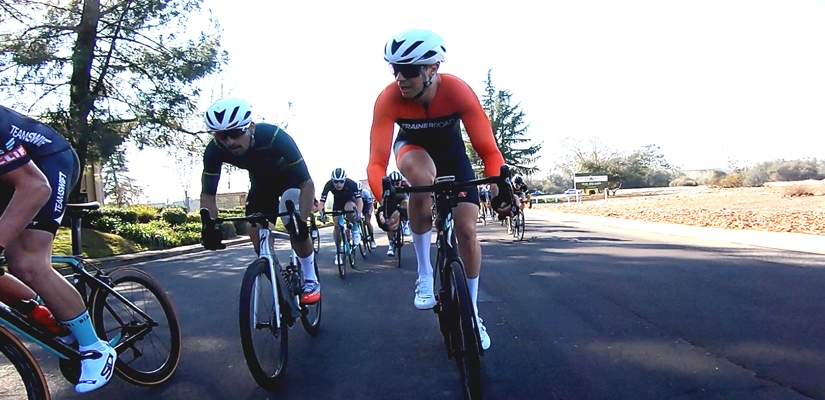How to Communicate Mid-Race

Mid-race communication between you and your teammates can make or break your race. Communicate a well-planned strategy and your team can control the race, setting you up for victory.
For more on race tactics check out our Race Analysis YouTube Playlist.
Create a Plan and Communicate it
Before the race begins, take some time to come up with your gameplan and communicate it clearly. Whether you have one teammate or five, everyone should know their role. Because racing is dynamic, you’ll want a backup plan and a way to communicate it during the hectic moments of the finale. Make sure that everybody understands their specific role for the backup plan. You’ll also need to decide how you are going to communicate throughout mid-race that the backup plan is in effect.
Additionally, make sure your plan and backup have clear and concise steps assigned individually to each team member. That way, if one of the steps is missed, shortened, or lengthened, everyone else knows that they are still responsible for their assigned step. For example, one teammate is chosen to take the first position in the leadout from one lap to go to 200 meters.
If possible, pre-ride the course with your teammates to pick out race landmarks. This could be a signpost, corner, or other notable feature that will serve as a marker for strategic moves in the final sprint. Everyone must be very clear on the landmarks. So avoid vague descriptions and instead opt for rolling through and physically pointing out the actual decisive point on the course. That way, you will be able to execute your plan. You can go a step further and discuss how the last corners should be taken. This will reduce the need to convey information during a physically demanding time.
Different Ways to Communicate Mid-Race
Even with the best plans, you will still need to devise a way to communicate during the race. The first thing is to designate the person who will call the shots. Most of the time, this will be the last rider in the leadout train. Another option is to have a team director on the side of the course. Next, choose how things will be communicated. You’ll need to discuss the verbal ques and perhaps the use of radios. You could even use non-verbal cues like an elbow flick or some other physical indication. Whatever it is, just make sure everyone is on the same page.
Communicate From the Back to the Front
Great team communication begins with the final rider in the leadout train. Your leadout wants to hear as much as possible and should never have to look to see where you are. That way, they can focus on controlling the race without having to glance at what’s going on behind them.
As the rider in the back, think of yourself as the drill sergeant of the team. You give the command and the riders in front, and they follow while passing the information up to the front. These commands could be as simple as “left” or “right” or “faster” or something more detailed. But agree on what the verbal cues will be beforehand and try to keep them as simple as possible. Pro Tip: Pick specific words for your team. A lot of other teams use “Go,” which sounds like “no.” “Up” is a good one to use for increasing the speed as much a necessity to cover attacks.
Make sure that everyone on the team knows why you are giving the commands. Use your advantage of seeing more of what’s going on in the race, combined with knowledge of your team’s game plan, to take control of the race.
Read the Race and React
With all of that said, racing is dynamic and no matter what the plan was beforehand, you still have to react to the race as it unfolds. Clear and concise communication allows your teammates to respond faster to what is happening. That small difference in reaction could be the difference between making the podium or not. This is why the fallback plan must be specific. It can be tempting to think, “If Plan A doesn’t work, it’s every rider for themselves,” or another vague plan. Be as specific as possible. Include what the trigger points would be to default to the backup plan. An example of this would be if you lose your leadout riders, are unable to get into the right position, or if somebody is further up the road than you anticipated. Whatever the case, think tactically throughout the race, and communicate your decisions to the rest of the team.
Communicating mid-race can be a challenge. But with the right plans, methods of communication, and the ability to react to the race, your team can control the race.
Subscribe to the PodcastTry TrainerRoad
For more cycling training knowledge, listen to the Ask a Cycling Coach — the only podcast dedicated to making you a faster cyclist. New episodes are released weekly.